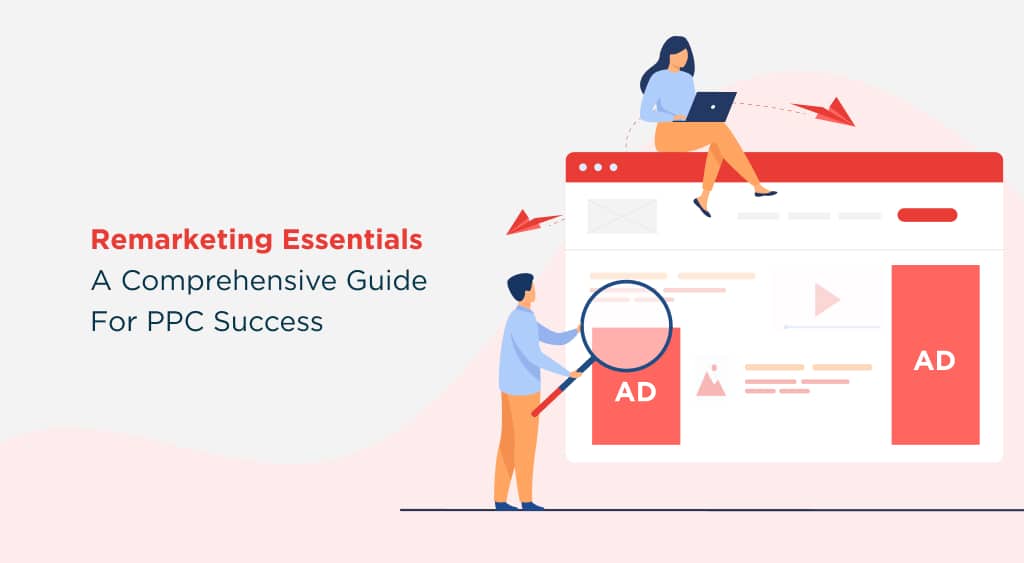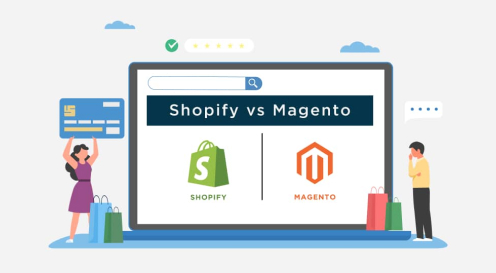Remarketing Essentials: A Comprehensive Guide for PPC Success
14 Mar 2024 | 4 min read
What is Remarketing?
Remarketing is like having a friendly reminder in the digital world. It’s a way for businesses to show ads to people who have visited their website or used their app before. When someone visits your site, a small digital tag, like a cookie, notes their visit. Later, as they surf the web, this tag helps your ads reappear, reminding them about your brand and encouraging them to return.

How Does Remarketing Work?
Here’s how the magic happens: Someone visits your website or interacts with your app. During their visit, a tiny tracker (cookie or pixel) is placed on their device. This tracker is like a digital memory, remembering the user’s actions. Later, when creating ads, you can target these visitors based on what they looked at or did on your site. This is done through platforms like Google Ads or Facebook Ads, which help your ads show up where these past visitors go online. It’s a smart way to re-engage people who already have an interest in what you offer.
Benefits of Remarketing
Remarketing is a powerful tool for boosting your PPC campaigns. Here are its main benefits:
- Increased Brand Awareness: Remarketing keeps your brand in the viewer’s mind. By showing your ads repeatedly to potential customers, you’re building familiarity and trust.
- Higher Conversion Rates: Since you’re targeting people who already showed interest, they’re more likely to take action like making a purchase.
- Improved Ad Relevance: With remarketing, your ads are more personalized. They’re based on the visitor’s past behavior, making them more relevant and appealing.
- Cost-Effective Advertising: Generally, remarketing can be more budget-friendly. You’re reaching out to an audience already aware of your brand, which can lower the cost per click and improve ROI.
Implementing Remarketing Campaigns
Embarking on a remarketing campaign is a strategic move to re-engage those who’ve shown interest in your brand. Here’s how to make it work:
Setting Up Your Remarketing Campaign
Begin by integrating tracking codes, like tiny digital breadcrumbs, on your website or app. These codes are vital in following the trail of your visitors and understanding their interactions. Platforms like Google Ads and Facebook Ads offer intuitive tools for this. After setting up, you can create custom lists based on user behaviors, like visiting certain pages or leaving a full shopping cart. These lists are your roadmap to understanding different audience segments and engaging them effectively.
Choosing the Right Platforms for Remarketing
If your audience loves social media campaign, then Facebook ads or Instagram ads might be your best bet. For a more professional audience, LinkedIn ads could be the key. Don’t overlook display networks; they cast a wide net across various websites, increasing your ad’s reach.
Creating Effective Remarketing Ads
The heart of your campaign lies in the ads themselves. They should have visuals that catch the eye and messages that speak directly to the viewer. The goal is to make them visually appealing and to-the-point, with a clear call to action. Remember to customize your ads for different segments of your audience, making each ad feel like a personal conversation with that particular group.
By carefully setting up your campaign, choosing the right platforms, and crafting impactful ads, your remarketing efforts can become a powerful tool in your advertising Pay Per Click . Keep an eye on how your ads perform and be ready to tweak them for optimum engagement and conversion.
Key Strategies for Effective Remarketing
Remarketing can significantly boost your PPC campaigns when done right. Here are some essential strategies to help you harness its full potential:
Refining Audience Segmentation
Think of your audience as a spectrum of varied interests and behaviors. Segmenting means categorizing them into distinct groups based on their interaction with your website or app, like visitors who browsed specific products or those who abandoned their cart. Tailoring your approach to each group can dramatically increase the relevance and effectiveness of your ads.
Customizing Ads for Each Segment
Once you’ve segmented your audience, it’s time to speak their language. Create ads that resonate with each group’s specific interests and behaviors. If a segment showed interest in a particular product range, focus your ads on those products. It’s about making each ad feel like it was crafted just for them.
Implementing Frequency Caps
Balance is key in remarketing. You want to remind your audience of your brand without overwhelming them. Set a cap on how often individuals see your ads to maintain a healthy balance between visibility and saturation. This approach helps in keeping your brand’s presence positive and engaging.
Adopting these strategies can make your remarketing campaigns more focused, personalized, and effective. It’s all about understanding your audience, communicating with them in a way that resonates, and maintaining a noticeable but not overpowering presence
Optimizing Your Remarketing Campaigns
Analyzing Campaign Metrics Diligently: Continuously monitor the key metrics of your campaigns. Focus on understanding the nuances of your ad performance through metrics such as conversion rates and click-through rates. This analysis is critical for identifying improvement areas and optimizing your approach.
Executing Controlled A/B Tests: Implement A/B testing to discern the most effective elements of your remarketing ads. This methodical testing helps in determining the ad variations that best resonate with your target audience, leading to higher engagement levels.
Adopting Dynamic Remarketing Techniques: Use dynamic remarketing to customize your ads based on users’ previous site interactions. This strategy enhances ad relevance, thereby increasing the chances of re-engaging past visitors and boosting conversions.


